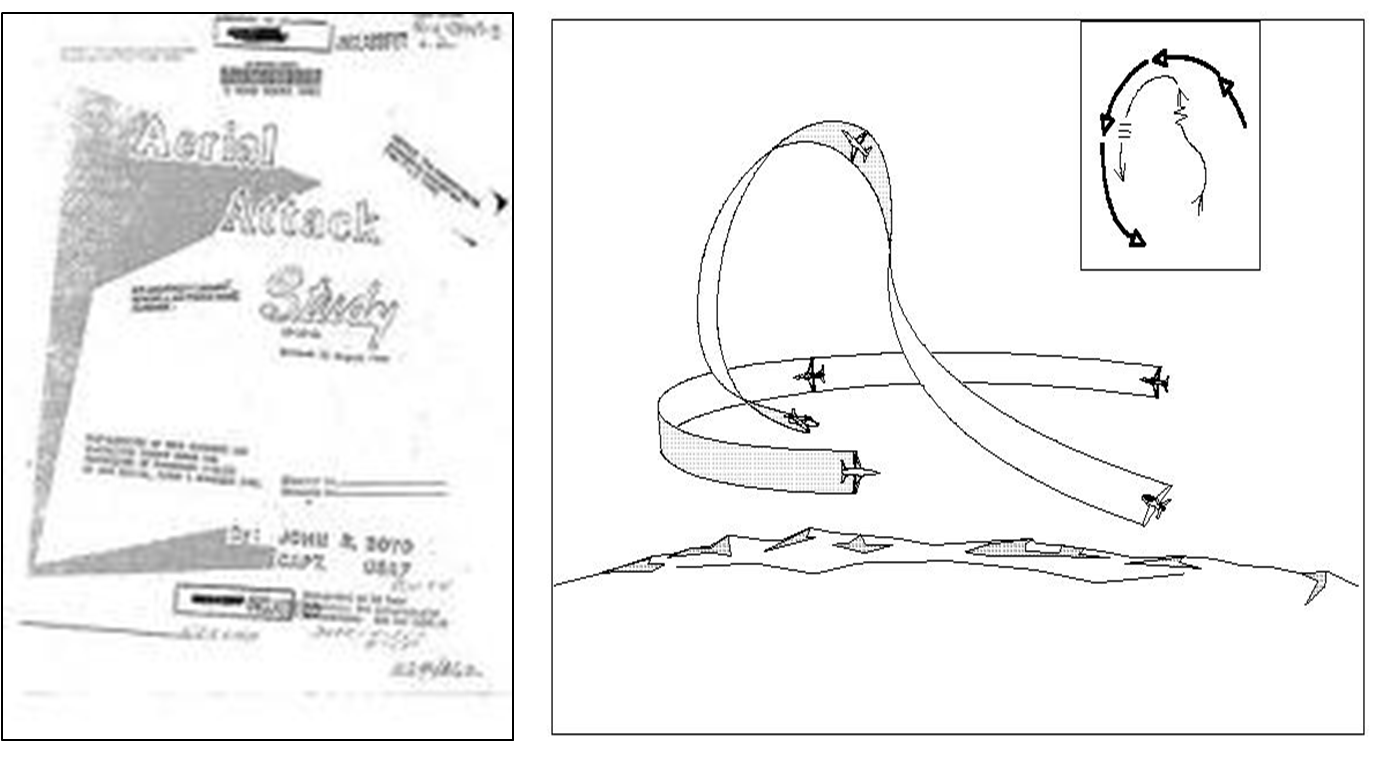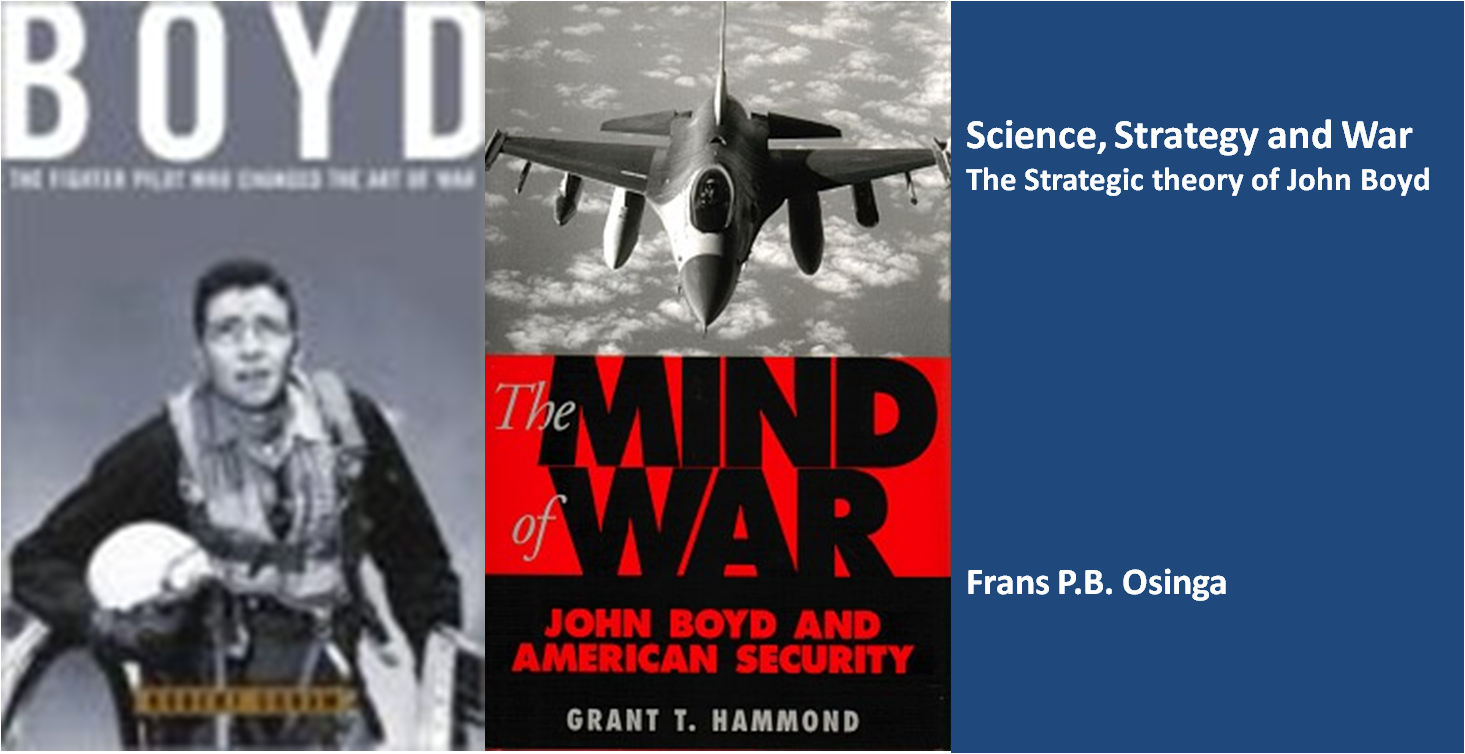Jan.05.2011
4:47 am
by Ed Beakley
Searching for John Boyd
Boundary Condition # 4 (1)
for Boyd, uncertainty is the pervasive element of human endeavor, indeed, it is the prime characteristic of life … thinking strategically under such a condition requires a continuous combination of analysis and synthesis… and a multidisciplinary and multi-spectral approach
The OODA loop is much less a model of decision-making than a model of individual and organizational learning and adaptation in which the element of orientation plays the dominant role in the game of hypothesis and test, of analysis and synthesis, of destruction and creation. Science, Strategy and War; The Strategic theory of John Boyd, Col. Frans P.B. Osinga, Royal Netherlands Air Force

Thirty years ago to the day, January 4, 1981, Dogfight Tacks Can Win Big Wars, Preaches Pilot Turned Tactician by staff writer Michael Getler, was published in the Sunday Washington Post, thus beginning my personal searching for John Boyd, literally. Getler notes:
Today an increasing number of the nation’s senior military are listening to the ideas this imaginative and unconventional thinker lays out in a rough, repetitive, yet profound four hour lecture called “Patterns of Conflict.” “It’s a real tour de force,” says the Army War College Commandant, Maj. Gen. Jack Merritt… he created a lot of excitement up here among strategists and historians on the college staff…we also want to get the senior leadership of the Army to hear this thing…The top leadership of the Marine Corps has already heard Boyd’s theories…Senior officers say the Marine commandant, Gen Robert H. Barrow has spent hours with Boyd and was “very taken with him.” Marine Gen. P.X. Kelley, head of the new U.S. rapid deployment force also is Boyd listener and supporter.
I tried finding out about attending one of those briefings as they appeared to relate to my job in the program office responsibe for developing Over-The-Horizon-Detection-Classification-and-Targeting capability for the emerging Tomahawk Anti-Ship cruise Missile, and development of early computer aided C2. Dr. Joel Lawson at NAVELEX had written about a feedback loop for C2 very similar to Boyd’s but with different context and starting points. But I was never able to find anything to lead to attending a brief – my great loss. Sometime after that article, it dawned on me that the “ribbons” in my Air Combat Maneuvering (ACM) training manual in Navy flight school were from Boyd and his 1960 Aerial Attack Study, that the Energy Maneuverability concepts I had just recently studied as the core of fighter aircraft design at Naval Postgraduate School in Aeronautical Engineering were developed by Boyd, and now the OODA process and Patterns of Conflict were all from the same guy! It was an “enlightenment” I’ve never gotten over – thankfully.
Boyd had recognized that the ability to shift from one maneuver to another (fast transients) more rapidly than an adversary enables one to win in air-air combat and that fighter aircraft could be compared by their capability to change energy states. He then expanded the concept of “agility” from a largely physical property of aircraft to a way of thinking about warfare and further into the largely mental property of competitive organisms in general.
John Boyd was the rarest of people – fighter pilot with all the traits thereunto, engineer whose Energy- Maneuverability theory revolutionized fighter aircraft design, researcher, historian, intellectual, and military strategist whose concepts place him in the rarefied company of Sun Tzu, Miyamoto Musashi, and Carl von Clausewitz. To move through his “A Discourse on Winning and Losing” and follow the path he took to his final offering “The Essence of Winning and Losing” is an education in itself.
Boyd’s Air Force career and experience as a fighter pilot underpins all, but his beginning as a military and competitive strategist, the basis for “A Discourse on Winning and Losing” and his ultimate legacy in history launches from the 1976 publication of the paper “Destruction and Creation.” This abstract treatise describes how an interplay of analysis and synthesis destroys and creates our mental images of the external world – disorder turns into order which turns into disorder in a never ending cycle. To survive in a complex world on our own terms – to improve our capacity for independent action –- we must understand how to “comprehend, shape, adapt to, and in turn be shaped by an unfolding, evolving reality that is uncertain, ever changing, unpredictable.”
Because I believe his work so crucial to the study of time critical decision making in crisis, PWH has provided a separate page with linkage to Boyd’s work, and has featured multiple articles deriving from his work including Chet Richards’ application of Boyd’s concepts to business. The reader is strongly encouraged to read the three major books addressing Boyd and his theory. (Col Frans Osinga has graciously provided a PDF of Science, Strategy and War and is now available in the PWH library)
Boyd looked first at air-air warfare, then warfare in general, then competition at large, his friend and now PWH advisor Chet Richards with Boyd’s support then took the “Boyd Way” into business, while folks like Fred Leland have tackled use in Law Enforcement. . But no one I can find has done more than generally discuss Boyd as it relates to severe crisis and decision making required. In strict sense, Boyd and almost all who write about him or his theories focus on competition with a human adversary.
The 2011 previously stated focus on “unconventional crisis” allows for human action – in a 4th Generation Warfare (4GW) sense (i.e., Mumbai type terrorist incidents), but the human adversary is only one forcing factor for incidents requiring time critical decision making. As 2010: The Earth Strikes Back depicts, Mother Nature or in similar sense, the human creation of disaster such as Deepwater Horizon require serious thought about community survival.
For 2011 as PWH continues to research and provide discussion on decision making in severe crisis, Boyd and his “way” is the final of four boundary conditions. I intend to use the OODA notion of time cycles and competitive behavior as a “lens,” first for analysis of my intersection pieces (see previous three posts) and then to explore how to build a Boyd “snowmobile” around the expanded idea from Dr. Richards of what kind of organization(s) can operate to recover and survive from a severe negative OODA start. I.e., how does a community “regain relative superiority” (from Admiral William McRaven’s SPECOPS) after the shovel in the back of the head?
How this all plays out, well, we’ll just have to see. I am most intrigued as the journey begins.
Filed in 2011 Boundary Conditions,John Boyd | Comments Off on Searching for John Boyd


